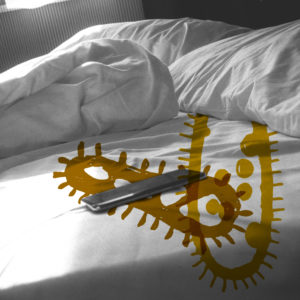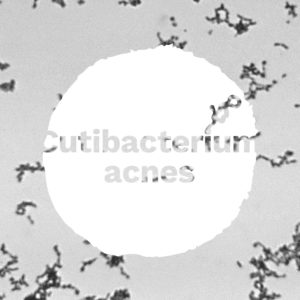“Life is about rhythm. We vibrate, our hearts are pumping blood, we are a rhythm machine, that’s what we are.”
Mickey Hart, artist musician, Grateful Dead
Circadian rhythms
Our natural, internal, circadian rhythms ensure that most of us wake up in the morning, without the need of an alarm clock. A tiny region of the brain’s hypothalamus (the suprachiasmatic nucleus), manages all the complex biochemical changes that underpin our diurnal cycles[1].
As a general overview, it’s fair to say that most healthy people experience a daily waking period when the cortisol (known as the stress hormone) in their blood serum reaches a peak and triggers the adrenal glands, releasing adrenalin.
This usually occurs between 6am and 8am. By midday, our general metabolism has increased significantly, we experience a rise in core body temperature, and begin to feel hungry. The cortisol serum level then starts to gently decline, signalling our general metabolism to slow, which, when combined with increasing levels of melatonin (the hormone that regulates sleep–wake cycles), makes us sleepy. By 3am, when the cortisol levels have reached their lowest point in the 24-hour cycle, we are normally fast asleep.
The cortisol levels then start to rise again, until they reach the morning waking peak and so the next cycle begins. Exposure to sunlight fine tunes our diurnal cycles, working most notably, through melatonin[2]
Beauty sleep

For those of us working in personal care, it’s interesting to note that as a direct consequence of studying of circadian rhythms, the concept of ‘beauty sleep’ is gaining scientific support.
While studies show skin repairs faster, produces more collagen and skin cells at night, antiaging skin creams are said to be more effective when used last thing at night.
The skin’s response to allergies is greater in the evening and sufferers of inflammatory skin complaints such as atopic dermatitis or psoriasis report that symptoms are more severe at night[3]. Attractiveness studies have also shown that sleep deprived people appear less appealing[4].
“Many insects and free-living microbes also have been shown to have their own internal body clocks.”
Microbes and circadian rhythms
Common sense dictates that microorganisms with life cycles less than a day, would have rhythms less than 24 hours (ultradian rhythms). However, as the microbiome communities are known to adjust and adapt to local changes, it’s highly likely that aspects of our skin microbiome are responding to our diurnal changes.
Through its continuous crosstalk with our skin, our microbiome will be influenced by our circadian rhythms. The recurrent pattern of weaker and stronger inflammatory responses, for example, must induce a decline and regrowth of some elements within the microbiota.
There would be profound consequences, if say, some microbes take advantage when the skin’s immune response is at its weakest, and the microbes flourish to the point of producing dysbiosis and so triggering flare-ups. Inflammation would increase and is at its greatest when our skin cycles reaches its most reactive period.
Circadian rhythms are not confined to large animals with long life spans. Many insects and free-living microbes also have been shown to have their own internal body clocks. Hall, Rosbash and Young, began their journey to their 2017 Nobel Prize in Physiology for Medicine, “for their discoveries of molecular mechanisms controlling the circadian rhythm”, back in 1984.
This was when the gene responsible PERIOD protein was discovered. PERIOD protein controls fruit flies’ (Drosophila melanogaster) sleep patterns by building up in the insects cells overnight and breaking down throughout the next day [5].
The evidence that some bacteria have circadian rhythms, came soon after, with elegant experiments using, both freshwater Cyanobacterium Synechococcus elongatus and marine living Cyanobacterium Synechococcus WH7803. Cyanobacterium S. elongatus, were genetically transformed into glowing ‘rhythm light machines’ that emit light only when fixing nitrogen, by introducing a luciferase reporter into their genome. The transformed Cyanobacterium pulsated light over 24-hours under conditions that established this prokaryotic bacterium has circadian clocks[6].
P. acnes’ day
With the wealth of knowledge amassed over the past 100 years, it is easy to imagine a typical 24 hr period for P. acnes, a common member of the skin microbiome. They are morphologically adaptable rod shaped cells that feed on sebum. Some sebum secretion is controlled by pilosebaceous units in hair follicles, which respond to stress hormones. It is likely therefore that the host’s waking peak cortisol also acts as an alarm clock for P. acnes and the many other sebum loving microbial communities associated with acne. The cortisol levels peaking on wakening will trigger a generous sebum breakfast for P. acnes, especially when the P. acnes is living on individuals whose pilosebaceous units are particularly responsive to peak cortisol. The argument for a relationship between acne and cortisol rhythms was strengthened further by a recent paper [7]. In this paper, they described an acne variant named Occasional acne, which occurs in people who do not normally suffer from acne and is commonly referred to as nightshift’s acne or airplane acne because, as these names suggest, it occurs when cortisol rhythms are disrupted.
“The P. acnes genome has been sequenced and shown to have several genes for skin degrading enzymes and immunogenic proteins… these changes may occur faster as the afternoon turns to evening as our response to allergies and inflammation is greater in the evening.”

Microbiota are stabilized by food webs and antagonistic interactions. The sebum fuelled microbes will flourish and so energize the dynamic food web. With this increased metabolism comes an increase in antagonists such as bacteriocins, proteases and other inhibitory or toxic substances.
As P. acne’s day progresses, it will therefore have to cope with the increasing levels of succinate (which is toxic to P. acnes), produced by microbes such as Staphylococcus, while, to gain advantage over its competitors, P. acnes will start producing its own bacteriocins, proteases and organic acids including propionic acid.
Remembering the crosstalk, mentioned earlier, which takes place between host and microbiome, by secreting different metabolites, P. acnes will be causing changes in skin [8]. The secreted organic acids lower the surface pH and comedones start to form as P. acnes produces substances that indirectly activate our innate cutaneous immunity, our keratinocytes and many sebaceous glands (Xu and Li).
The P. acnes genome has been sequenced and shown to have several genes for skin degrading enzymes and immunogenic proteins. Interestingly, these changes may occur faster as the afternoon turns to evening as our response to allergies and inflammation is greater in the evening. Interestingly, P. acnes has a slower generation time than other typically aerotolerant anaerobic and anaerobic bacteria.
Using growth curves, the generation time for P. acnes calculated to be approximately 5.1 hours[9], so although comedones create a comfortable local anaerobic environment for P. acnes, the other anaerobic microbes including S. aureus may appear to benefit more from these changes. P. acnes preference for the hostile conditions found in hair follicles, i.e. anaerobic, low water availability, high ionic strength and osmolarity means competition is reduced and it’s protected sunlight light, pollution, abrasion, cleansing and exposure to cosmetics.
As P. acnes colonies become more established, many start producing biofilms to further protect and stabilize maturing communities. Microscope images of P. acnes macrocolonies (>103 cells), living in hair follicles show P. acnes cells enveloped in biofilm. Other studies show the film can be composed predominantly of carbohydrate, proteins and in some cases of e-DNA[10]. But even these enveloped P. acnes cells are not totally safe. They can have an enemy within. One study showed P. acnes phages, which infect and kill P. acnes cells, were detectable in 26%–30% of comedones sampled[11].
In summary
When considering the microbiome, it’s important to have a dynamic, interdependent model in mind, which is as much subject to the rhythms of life, as ourselves. The success and activity of even the simplest P. acnes cell will depend on our circadian rhythms controlling sebum production, our immune system and inducing a regular ebb and flow between the different communities living on our skin.
The studies with nitrogen fixing cyanobacterium suggest that P. acnes cells may also have their own internal molecular time clocks, which if true, may mean ‘beauty sleep’ will be as much about keeping in sync with our skin microbiome as it is with keeping in sync with our circadian rhythms.
Propionibacterium acnes (P. acnes), now reclassified as Cutibacterium acnes (C. acnes) – is a tiny microbe with over 120 years of scientific studies
Cutibacterium acnes (formally known as P acnes) is among the most highly studied microbes found in the skin microbiota. (Google Scholar search engine locates 265,000 scientific publications mentioning P. acnes in 0.1 seconds).
The bacterium was first noticed in the early 1890s, by Unna when he was studying acne comedones. Next, Sabouraud succeeded in producing a pure culture and, as the old century came to an end, Gilchrist, named the microbe, acne bacillus (Douglas and Gunter).
Then, as early as 1910, eminent bacteriologists (including Alexandra Fleming) were noting that although acne bacilli were club-shaped and so morphologically they were similar to Corynebacterium, unlike Corynebacterium, acne bacillus has a strong preference for anaerobic conditions and its biochemistry is much closer to propionic acid bacteria.
Despite Bergey et al., deciding to place acne bacteria in the genus Corynebacterium, in 1923, Gilchrist’s, acne bacillus has remained Propionibacterium acnes (P. acnes) for the best part of 100 years. It is only recently, in 2016 that P acnes was reclassified as Cutibacterium acnes based on its genomic adaptive changes.
Alexander Fleming’s vaccine idea
Fleming published a paper in 1909 proposing vaccines for acne treatment, which of course did not happen, however 100 years later, the Journal of Investigative Dermatology, describes the imminent breakthrough development of an acne vulgaris vaccine.
The 2019 author’s vaccine is based on antibodies to a toxin secreted from bacteria in acne vulgaris making it is different to Fleming’s vaccine but otherwise theirs and the great man’s thinking are very similar.
This article was written by Dr Barbara Brockway of AppliedDNA Sciences.
For more contributor articles, browse our Views from section of the Content Hub
[1] Hastings, H.M., Maywood, E.S. and Brancaccio. Generation of circadian rhythms in the suprachiasmatic nucleus. Nature Reviews Neurosciencevolume 19, pages453–469 (2018)
[2] Foster, R.G. and Kreitzman, L. Circadian Rhythms: A Very Short Introduction. Oxford University Press. (2017)
[3] Alexandra R. Vaughn BS Ashley K. Clark BS Raja K. Sivamani MD, MS, CAT Vivian Y. Shi MD Circadian rhythm in atopic dermatitis—Pathophysiology and implications for chronotherapy. Dermatology Volume35, Issue1 p152-157 (2018)
[4] Axelsson, J., Sundelin, T., Ingre, M., Domeren, E. J.W. van, Olsson, A., Lekander, M. Beauty sleep: experimental study on the perceived health and attractiveness of sleep deprived people. BMJ 2010;341:c6614: https://doi.org/10.1136/bmj.c6614 (2010)
[5] Reddy P, Zehring WA, Wheeler DA, Pirrotta V, Hadfield C, Hall JC, Rosbash M. Molecular analysis of the period locus in Drosophila melanogaster and identification of a transcript involved in biological rhythms. Cell. 38 (3): 701–10. (1984)
[6] Huang, T., and Chow Y. New type of N2-fixing unicellular cyanobacterium (blue-green alga). FEMS Microbiology Letters, Volume 36, Issue 1, p109–110, (1986).
[7] Melibary, Y.T., Alkeraye, S., Alnutaifi,K.A., Melibary, N.T., Alsuwaidi, M.K., and Algzlan, H.I. Occasional acne; an acne variant Clin Cosmet Investig Dermatol. 12: 219–222. (2019)
[8] Wilson, M. The Human Microbiota in Health and Disease: An Ecological and Community-based Approach. 1st Edition. (2018)
[9] Hall GS, Pratt-Rippin K, Meisler DM, Washington JA, Roussel TJ, Miller D. Growth curve for Propionibacterium acnes. Current Eye Research. Volume 13, 1994 – Issue 6 p465-466 (1994)
[10] Mak, T. N., Schmid, M., Brzuszkiewicz, E., Zeng, G., Meyer, R., Sfanos, K.S., Brinkmann, V. Meyer, T.F., and Brüggemann, H. Comparative genomics reveals distinct host-interacting traits of three major human-associated propionibacteria. BMC Genomics 14, 640 (2013)
[11] Brüggemann, H., and Lood, R. Bacteriophages Infecting Propionibacterium acnes. Biomed Res Int. (2013)
